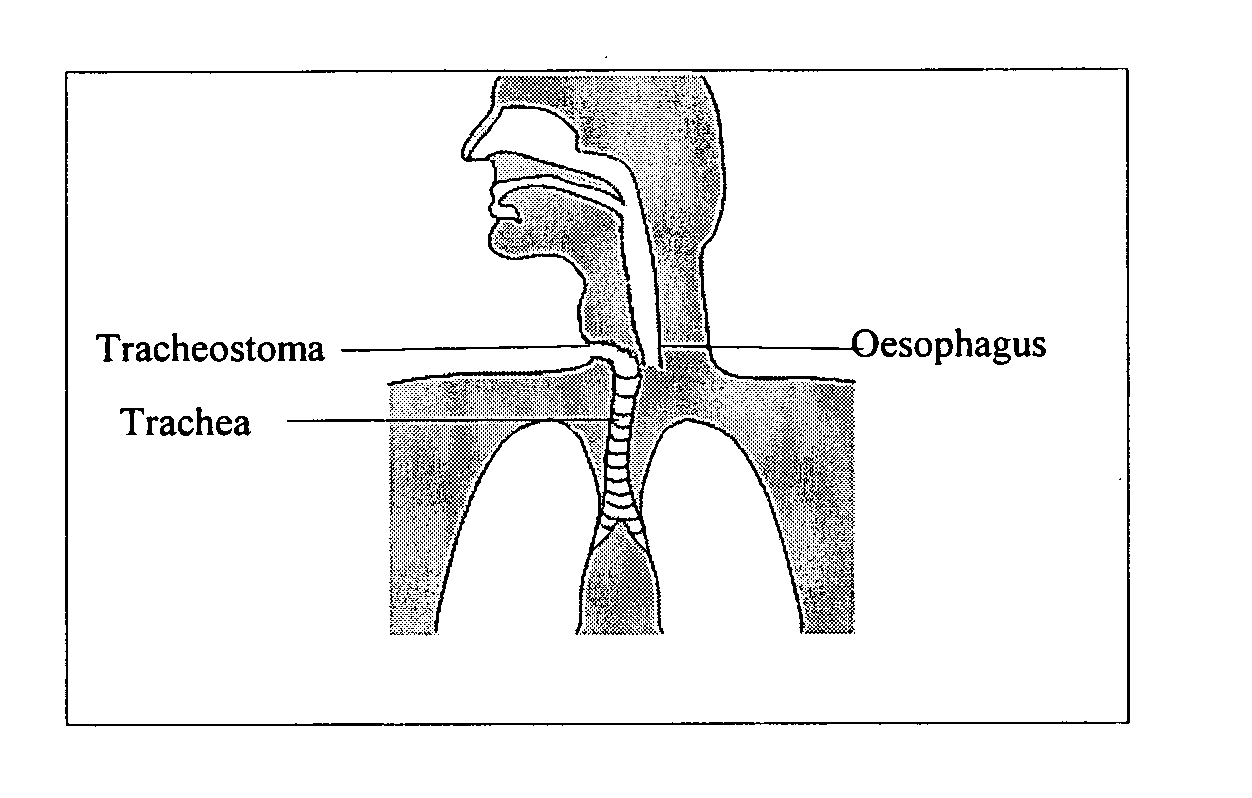Artificial Larynx
a technology of artificial larynx and larynx, which is applied in the field of artificial larynx, can solve the problems of short learning time of the device, low cost, and people losing their ability to talk
- Summary
- Abstract
- Description
- Claims
- Application Information
AI Technical Summary
Benefits of technology
Problems solved by technology
Method used
Image
Examples
Embodiment Construction
[0025]The above and additional features of the invention will be described below by way of example only and with reference to the accompanying figures in which:
[0026]FIG. 1 shows the basic anatomy of a patient after a laryngectomy taken from [11];
[0027]FIG. 2a) is a screen shot of a Logometrix system showing placement of sensors on the LogoMetrix pseudopalate(taken from [11]); and
[0028]b) illustrates the Logometrix system showing a pseudopalate and a palatometer taken from [11];
[0029]FIG. 3 is a space-time representation for the words “sentence”, “picture” and “very” taken from [11]; and
[0030]FIG. 4 a voting and predicting scheme for words and / or sounds
DESCRIPTION OF A PREFERRED EMBODIMENT
[0031]One embodiment of the invention will now be described by way or example only. In this embodiment a means for compensating for loss of speech, also referred to an artificial larynx, utilizes dynamic measurement of tongue position to infer intended speech and these signals are transmitted to an...
PUM
 Login to View More
Login to View More Abstract
Description
Claims
Application Information
 Login to View More
Login to View More - R&D
- Intellectual Property
- Life Sciences
- Materials
- Tech Scout
- Unparalleled Data Quality
- Higher Quality Content
- 60% Fewer Hallucinations
Browse by: Latest US Patents, China's latest patents, Technical Efficacy Thesaurus, Application Domain, Technology Topic, Popular Technical Reports.
© 2025 PatSnap. All rights reserved.Legal|Privacy policy|Modern Slavery Act Transparency Statement|Sitemap|About US| Contact US: help@patsnap.com



